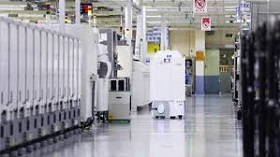Technology
International Internet Magazine. Baltic States news & analytics
Friday, 19.04.2024, 23:02
Ericsson introduces 5G technology at Tallinn plant
 Print version
Print version |
|---|
The resulting mobile communication is delivering the capacity, customization, and control needed to scale and secure the connected factory, improving manufacturing operations, the companies announced.
At 25,000 square meters, the Tallinn supply site is one of Ericsson's largest manufacturing units, incorporating research and development activities and volume production.
To increase production efficiency and sustainability, Telia and Ericsson jointly piloted a new dedicated cellular network for Internet of Things (IoT) within the factory. With testing finalized in June, the network now supports three innovative processes to enable more efficient production.
The first solution to benefit from the dedicated cellular network is Automated Guided Vehicles (AGVs) delivering product components from warehouse to the production lines. With the help of the new system, the AGVs can now communicate with the control system, provide a live stream of data and video, as well as use the dedicated network to open doors. Transporting components is a labor-intensive, costly and repetitive task where AGVs can save time, reduce the risk of damaging components, and cut waste.
The second solution is augmented reality troubleshooting, which is providing an interactive method for the quality control and testing of electronics components. By using augmented reality (AR) glasses or terminals, the troubleshooter gets an overlay with all manuals, instructions and collective knowledge of other troubleshooters, allowing them to quickly identify potential problems. Field tests have shown a 50% reduction in time spent on troubleshooting circuit boards when using AR.
The third solution enables the Tallinn factory to monitor the environment using mobile sensors to measure moisture, temperature, noise, light, and carbon dioxide. The goal is to provide employees with a safe and healthy work environment while minimizing the risk of production defects. The dedicated cellular network has the capacity to handle thousands of sensors in a factory, allowing them to be relocated as the layout of the factory evolves.








 «The Baltic Course» Is Sold and Stays in Business!
«The Baltic Course» Is Sold and Stays in Business!

